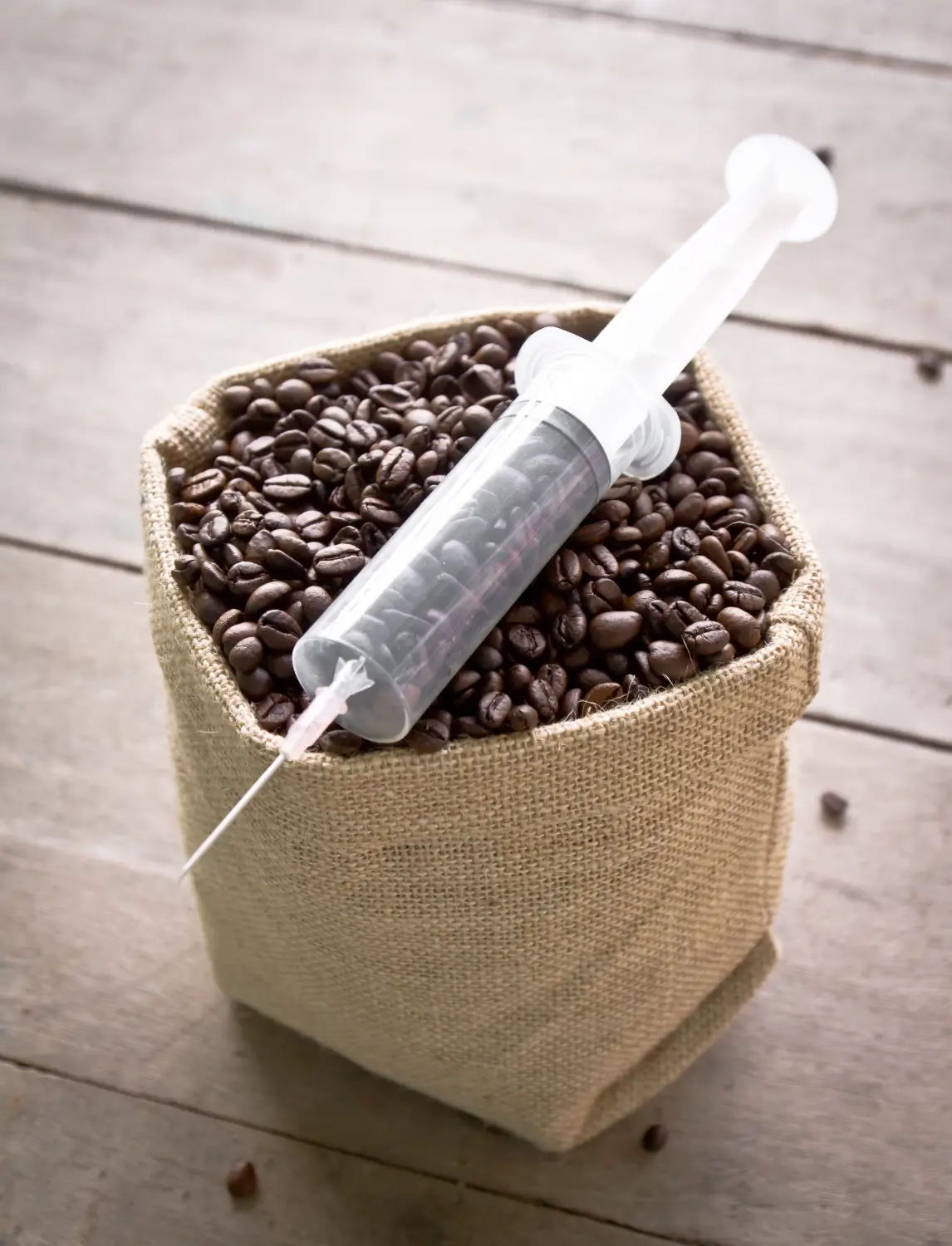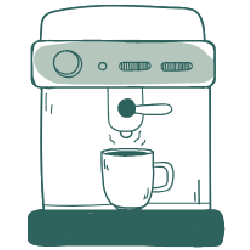You might have heard whispers about coffee enemas, perhaps as a “detox” trend or even an old-fashioned health remedy. But what exactly is a coffee enema? It’s an alternative medicine practice where someone injects brewed coffee into their colon, usually to supposedly cleanse their colon and detoxify their body. It sounds intriguing, and maybe a bit strange, but it’s definitely a topic surrounded by a lot of curiosity—and controversy. In this article, we’re going to unpack the reality of coffee enemas, looking at their origins, the claims people make about them, and crucially, the serious health risks they carry, all backed by what science actually says.
- What is a coffee enema?
- A look back: The history and evolution of coffee enemas
- The step-by-step coffee enema procedure
- Purported benefits: What proponents claim (and what science says)
- Serious risks and side effects of coffee enemas
- Who should not use coffee enemas? (Contraindications)
- Medical consensus: Why experts advise against it
- Conclusion
What is a coffee enema?
So, what’s a coffee enema all about? Simply put, it’s a procedure where you introduce a mixture of brewed, caffeinated coffee and water into your rectum. The idea behind it is that the caffeine from the coffee gets absorbed through the walls of your colon. Proponents claim this absorption then dilates your liver’s bile ducts, which supposedly stimulates liver function and helps your body eliminate toxins. It’s essentially a method of colon cleansing, but with coffee.
| Aspect | Description |
|---|---|
| What it is | An alternative medicine practice where brewed coffee is introduced into the colon for supposed cleansing. |
| Purported Benefits (unproven) | Detoxification, constipation relief, mood enhancement, weight loss, gallstone removal, chronic disorder improvement. |
| Documented Risks | Electrolyte imbalance, dehydration, rectal burns, bowel perforation, infections, GI distress, caffeine overdose, fatal outcomes. |
| Medical Consensus | No scientific evidence supports purported benefits; mainstream medical authorities strongly advise against it due to serious risks. |
A look back: The history and evolution of coffee enemas
You might be surprised to learn that the concept of enemas for health isn’t new at all. People in ancient Egypt, for instance, used enemas to relieve constipation and improve their health. Fast forward to the 1800s, and that’s when we see the first specific mentions of coffee enemas. A medical report from 1866, for example, noted its use to help patients recover from poisoning. In the early 1900s, German scientists began studying how caffeine affected bile ducts and the small intestine, which really set the stage for medical interest in coffee enemas. The practice truly took off in the 1930s, thanks to Dr. Max Gerson. He integrated coffee enemas into his “Gerson Therapy” for treating debilitating conditions like tuberculosis, diabetes, and even cancer. Dr. Gerson firmly believed these enemas stimulated the liver and truly detoxified the body, going beyond what a regular saline enema could do. Interestingly, coffee enemas were even listed in the prominent Merck Manual as a treatment until 1977. That shows you how, for a time, they were actually part of conventional medicine. Today, however, they’re almost exclusively associated with alternative medicine, and the scientific backing for their use remains quite limited.
The step-by-step coffee enema procedure
If you’re curious about how a coffee enema is typically done, here’s a detailed, step-by-step guide. Remember, proper preparation and caution are crucial.
- Prepare the coffee solution: First, brew about three to four cups of organic, decaffeinated coffee using distilled or purified water. It’s best to use a non-toxic container, like stainless steel. Make sure the coffee cools down to a lukewarm temperature, around 100-104°F (37.8-40°C), to avoid any discomfort or injury.
- Set up equipment: You’ll need an enema bag or enema bucket with tubing and a shut-off clamp. Hang the bag or bucket about 16 to 45 inches above your position, as this height helps you control the flow speed.
- Lubricate: Apply a small amount of a light oil, like coconut oil or olive oil, to the tip of the enema tube. This makes insertion much easier. Just avoid thick lubricants such as Vaseline, because they can actually block the tubing.
- Position yourself: Most people find it easiest to administer the enema while lying on their right side on a towel or mat, positioned near a toilet for quick access. Some prefer to do it standing in the shower.
- Gently insert the tube: Carefully insert the lubricated enema tube into your anus. Don’t force it to avoid discomfort or injury. If the flow stops, gently withdraw and reinsert the tube until the solution starts flowing again.
- Administer the coffee slowly: Open the clamp and allow the coffee to flow slowly into your colon. For about three cups of coffee, this usually takes around two to three minutes.
- Retention: Once all the coffee is in, you’ll need to retain it for anywhere from three to fifteen minutes—though most people aim for three to five minutes, or as long as they comfortably can. To help distribute the coffee, try lying on your left side, then your back, and finally your right side for about five minutes each.
- Evacuation: After the retention time, sit on the toilet and relax your anal sphincter to expel the coffee and waste. The goal is to feel refreshed and cleansed afterward.
Here are some helpful tips:
- Use a timer to keep track of your retention time.
- Avoid tap water because of potential contaminants.
- Always use a towel or mat to catch any spills.
- If you experience excessive gas, some people find that adding blackstrap molasses to the coffee solution or breathing rapidly through their nose while using their abdominal muscles can help with retention.
- Always remember to use organic, decaf coffee and filtered water to minimize irritation or toxicity.
Purported benefits: What proponents claim (and what science says)
You’ve probably seen various claims about the coffee enema benefits circulating online. Proponents often suggest a range of positive effects, but it’s really important to know that these are almost entirely anecdotal and lack scientific backing. Here’s a rundown of what people claim these enemas can do:
- Detoxification: Many believe coffee enemas help your body eliminate toxins and support liver function by stimulating bile flow.
- Relief from constipation and digestive issues: Some suggest they cleanse the bowels and offer relief from constipation.
- Mood enhancement: You might hear claims that they boost mood and even alleviate headaches, fatigue, or brain fog.
- Weight loss: Interestingly, some link them to weight loss, though there’s no scientific basis for this.
- Removal of kidney and gallstones: A few proponents even claim they can help flush out these stones.
- Improvement of various chronic disorders: There are claims of relief from a wide array of chronic conditions.
Despite these widespread claims, you should know that there is little to no scientific evidence or medical support for any of these purported benefits. Experts generally agree that these effects are largely unproven.
Serious risks and side effects of coffee enemas
Now, let’s talk about the serious downsides. While you might hear about purported benefits, the coffee enema risks are very real, well-documented, and can be quite severe. It’s crucial to understand these dangers before even considering this practice.
- Electrolyte imbalances: You risk losing essential electrolytes—like potassium—which can severely disrupt your heart and muscle function, potentially even proving fatal.
- Dehydration: Fluid loss is common, which can lead to severe dehydration.
- Rectal burns and thermal injury: If the coffee solution isn’t cooled properly, you could suffer serious rectal burns and thermal injury.
- Bowel perforation: This is a very serious risk; you could accidentally puncture your bowel, an injury that often requires surgery and can be fatal.
- Infections: Using unclean equipment dramatically increases your risk of developing severe infections in your rectum and colon.
- Gastrointestinal distress: You might experience a range of unpleasant symptoms such as diarrhea, constipation, colitis (inflammation of the colon), abdominal cramps, nausea, vomiting, severe abdominal pain, bloating, and even rectal bleeding.
- Caffeine overdose/toxicity: Unlike drinking coffee, rectally absorbed caffeine dosing is uncontrolled. This can lead to caffeine overdose symptoms like sweating, dizziness, weakness, and serious heart problems.
- Fatal outcomes: Sadly, there have been documented deaths directly linked to coffee enemas, often from infections and severe electrolyte imbalances.
- Disruption of the gut microbiome: This practice can harm your beneficial gut bacteria, disrupting your natural digestive balance.
Who should not use coffee enemas? (Contraindications)
You should absolutely avoid coffee enemas if you have certain health conditions or if you fall into specific categories. Here’s who should steer clear:
- Anyone with pre-existing heart problems, lung problems, or kidney problems. These conditions can be exacerbated by the risks associated with enemas.
- People with known rectal disorders or intestinal disorders, such as inflammatory bowel disease (IBD) or hemorrhoids. Introducing foreign substances can cause severe complications.
It’s also really important to understand that enemas should never replace professional medical treatment for constipation or any other digestive issues you’re experiencing. If you’re having regular bowel difficulties, you should always consult a doctor. Additionally, be very wary of long-term or frequent use, as this greatly increases your risks of chronic electrolyte disturbances and can even lead to dependence on enemas for bowel movements.
Medical consensus: Why experts advise against it
When you look at the overwhelming medical consensus, experts are very clear: there’s just no reliable scientific evidence to support any of the purported health benefits of coffee enemas for detoxification, cancer treatment, or any other claims. In fact, mainstream medical authorities strongly advise against their use. Why? Because the risks are well-documented and quite serious. While plain water enemas or saline enemas might be used in specific medical situations – always under the guidance of a healthcare professional – coffee enemas don’t have that same backing and carry far greater dangers without proven benefits.
Conclusion
So, what’s the bottom line here? Coffee enemas are an alternative practice with a long history, but they simply don’t have modern scientific support. Any anecdotal benefits you might hear about are far outweighed by the serious health risks involved. If you’re considering any new health practice, especially one with such considerable dangers, please—always consult a qualified healthcare professional first. And if you have any underlying health concerns, seeking proper medical advice is always your best course of action.









